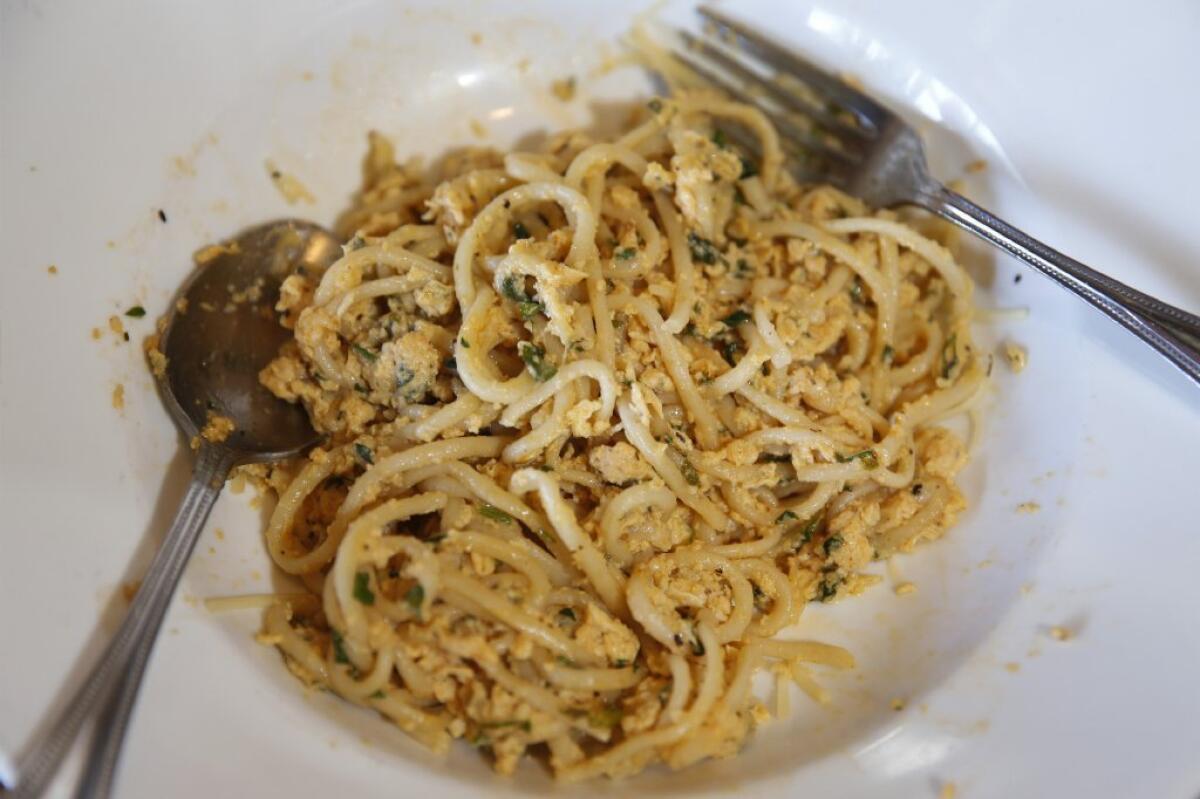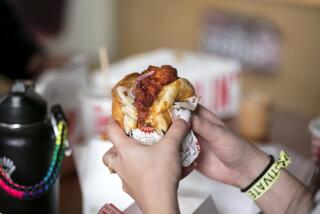High-carb meals pique cravings for more, study says

Tucking into a breakfast of buttermilk pancakes and maple syrup, or a great bowl of white pasta for lunch, not only sends your blood sugar soaring--and then, suddenly, plummeting. Four hours after you’ve put down your fork, such a meal makes you hungrier than if you’d eaten one with more protein and fiber and fewer carbohydrates, a new study finds.
The study also demonstrates that four hours later, the echo of that meal activates regions of the brain associated with craving and reward seeking more powerfully than does a meal with a lower “glycemic load.”
The result: At your next opportunity to eat, you’ll not only be hungrier; you’ll be looking for more of the same.
The study, conducted by researchers from Harvard Medical School and Boston Children’s Hospital, was published this week in the American Journal of Clinical Nutrition. The team was led by Dr. David S. Ludwig, director of Boston Children’s Hospital Obesity Prevention Center and author of Ending the Food Fight: Guide Your Child to a Healthy Weight in a Fast Food/Fake Food World.
And what’s the result of repeating this cycle meal after meal? The Harvard researchers surmise that the striatum, a key node in the brain’s reward circuitry, may lose its sensitivity to the neurotransmitter dopamine, increasing a person’s drive to eat high-carb foods and disrupting his or her ability to control that impulse.
The team saw many of those processes at work in a lab where on two separate occasions, 12 overweight or obese young men were offered one of two meals: one high in glycemic load (including refined sugars or carbohydrates) and the other, a meal with a low-glycemic load. The meals were equal in calories, as well in their relative protein, carbohydrate and fat content, and were rated equally tasty by subjects. But while the high-glycemic load meal contained such ingredients as corn syrup and Lactaid milk, the low-glycemic load meal contained corn syrup and regular low-fat milk.
Over the next several hours, the men not only had their blood drawn to gauge their metabolic response to the meals; they also assessed their perceived degree of hunger, and underwent a scan focusing on several nodes of their brain’s reward circuitry in a functional Magnetic Resonance Imager.
While the two meals elicited very similar reactions from subjects--they found both meals appealing--their brains and blood revealed dramatically contrasting responses. Four hours later, those who’d consumed the high-glycemic meal had lower blood glucose levels and said they felt hungrier than those who’d had the low-glycemic meal. Activity in the right nucleus accumbens and related reward circuitry, as well as in the region of the cortex that processes smell and taste, was significantly higher in those who’d consumed the high glycemic load meal than in subjects who’d consumed the low glycemic-load meal.
The combination of plummeting blood sugar levels, a greater sensation of hunger, and a memory of a meal high on the glycemic index led to the researchers’ conclusion: “This combination of physiological events may foster food cravings with a special preference for high [glycemic load] carbohydrates, thereby propagating cycles of overeating.”
Want to understand the difference between high-glycemic load foods and those lower in glycemic load? Here’s a good explanation. And here’s a helpful list.






